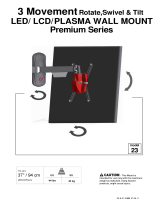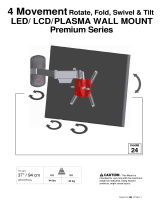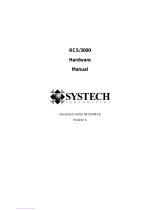Pro-face PS-A Series is an industrial-grade panel computer with a variety of features that make it suitable for a wide range of applications. These features include a powerful processor, a large touchscreen display, and a variety of input/output ports. The PS-A Series can be used for a variety of tasks, including data acquisition, process control, and machine monitoring.
Some of the specific capabilities of the PS-A Series include:
- High-performance processor: The PS-A Series is equipped with a powerful processor that can handle complex tasks quickly and efficiently. This makes it suitable for applications that require real-time data processing or high-speed communication.
Pro-face PS-A Series is an industrial-grade panel computer with a variety of features that make it suitable for a wide range of applications. These features include a powerful processor, a large touchscreen display, and a variety of input/output ports. The PS-A Series can be used for a variety of tasks, including data acquisition, process control, and machine monitoring.
Some of the specific capabilities of the PS-A Series include:
- High-performance processor: The PS-A Series is equipped with a powerful processor that can handle complex tasks quickly and efficiently. This makes it suitable for applications that require real-time data processing or high-speed communication.




















-
 1
1
-
 2
2
-
 3
3
-
 4
4
-
 5
5
-
 6
6
-
 7
7
-
 8
8
-
 9
9
-
 10
10
-
 11
11
-
 12
12
-
 13
13
-
 14
14
-
 15
15
-
 16
16
-
 17
17
-
 18
18
-
 19
19
-
 20
20
Pro-face PS-A Series Installation guide
- Type
- Installation guide
- This manual is also suitable for
Pro-face PS-A Series is an industrial-grade panel computer with a variety of features that make it suitable for a wide range of applications. These features include a powerful processor, a large touchscreen display, and a variety of input/output ports. The PS-A Series can be used for a variety of tasks, including data acquisition, process control, and machine monitoring.
Some of the specific capabilities of the PS-A Series include:
- High-performance processor: The PS-A Series is equipped with a powerful processor that can handle complex tasks quickly and efficiently. This makes it suitable for applications that require real-time data processing or high-speed communication.
Ask a question and I''ll find the answer in the document
Finding information in a document is now easier with AI
Related papers
-
Pro-face PS-3700A Installation guide
-
Pro-face PS3700A-T41-ASU-P41 Installation guide
-
Pro-face Rear Cover/Desktop Stand Installation guide
-
Pro-face Rear Cover (CA1-RCVLRG-01), Desktop Stand (CA1-STDLRG-01) Installation guide
-
Pro-face GP-4100 series Installation guide
-
Pro-face GP4000 SERIES Installation guide
-
Pro-face LT Type B User manual
-
Pro-face GP4000 SERIES User manual
-
Pro-face ST3300 Series Installation guide
-
Pro-face AST-3501T Installation guide
Other documents
-
ACTi E66 Installation guide
-
CTS EBU-120 Installation guide
-
Nortel Networks EMC User manual
-
 Barkan Mounting Systems 23B User manual
Barkan Mounting Systems 23B User manual
-
 Barkan Mounting Systems 24B User manual
Barkan Mounting Systems 24B User manual
-
 Systech Corporation RCS/3000 User manual
Systech Corporation RCS/3000 User manual
-
Contec VPC-1500 Owner's manual
-
Contec SPF6SQ1700 NEW Reference guide
-
Contec SPF6SQ1700 NEW Reference guide
-
Contec IPC-BX360-DC Owner's manual






















